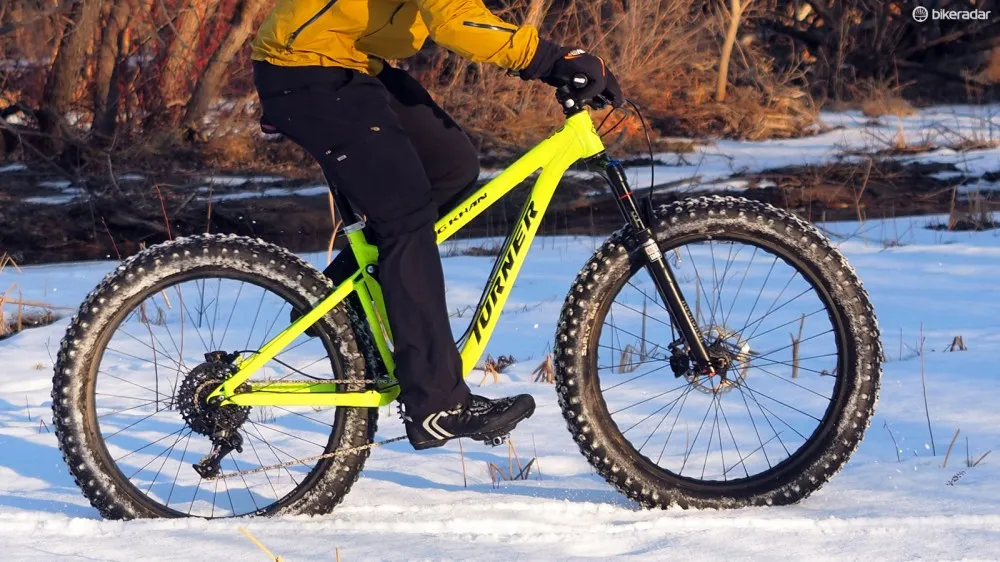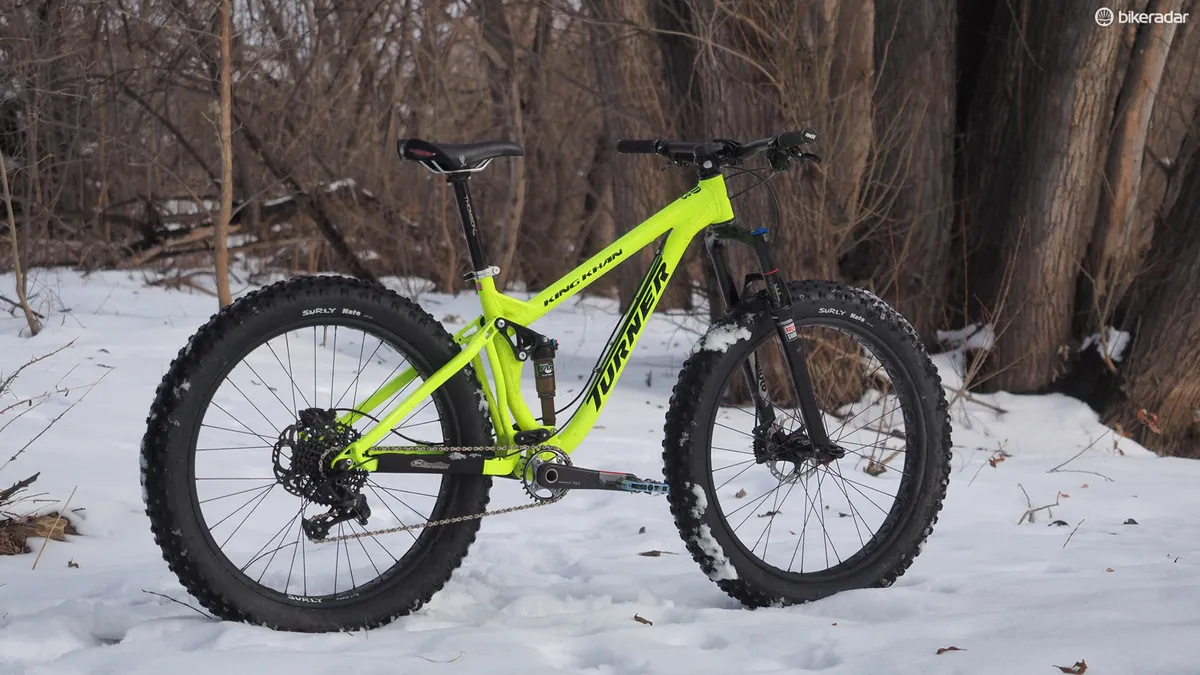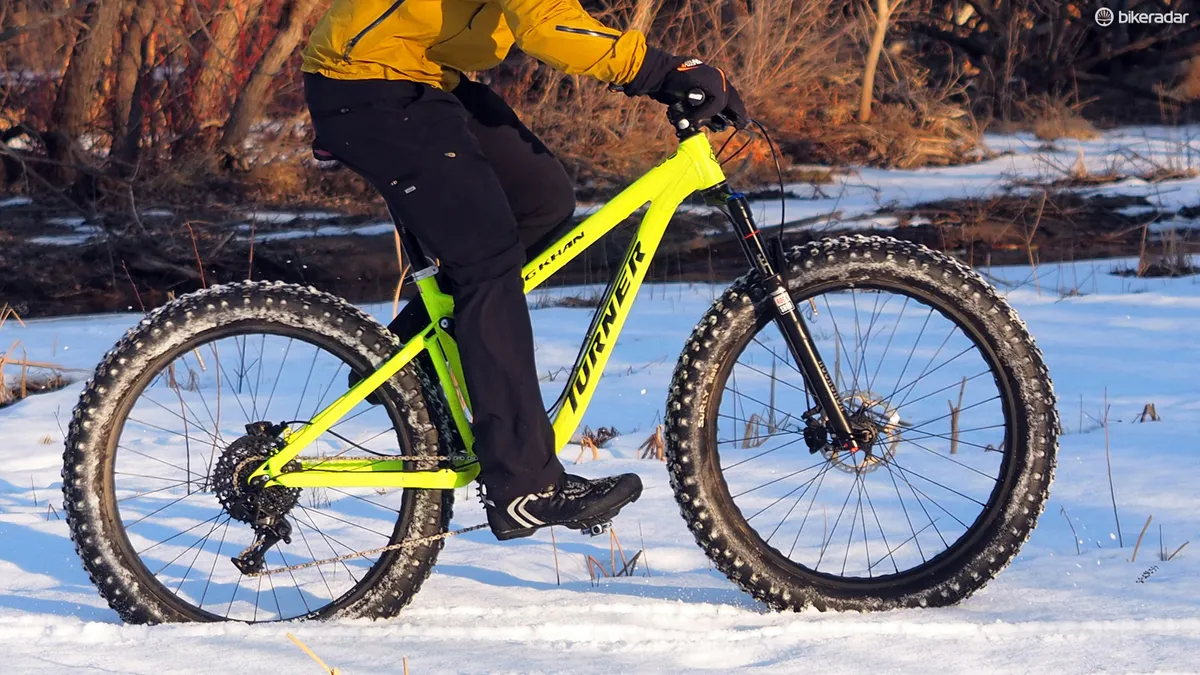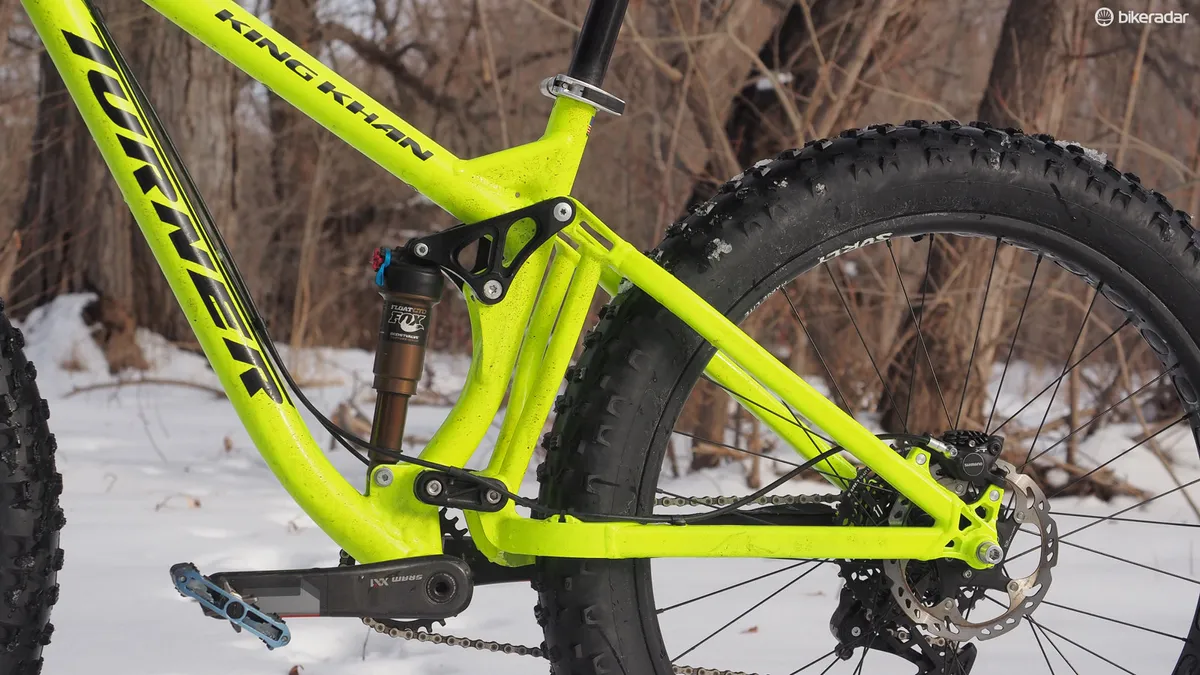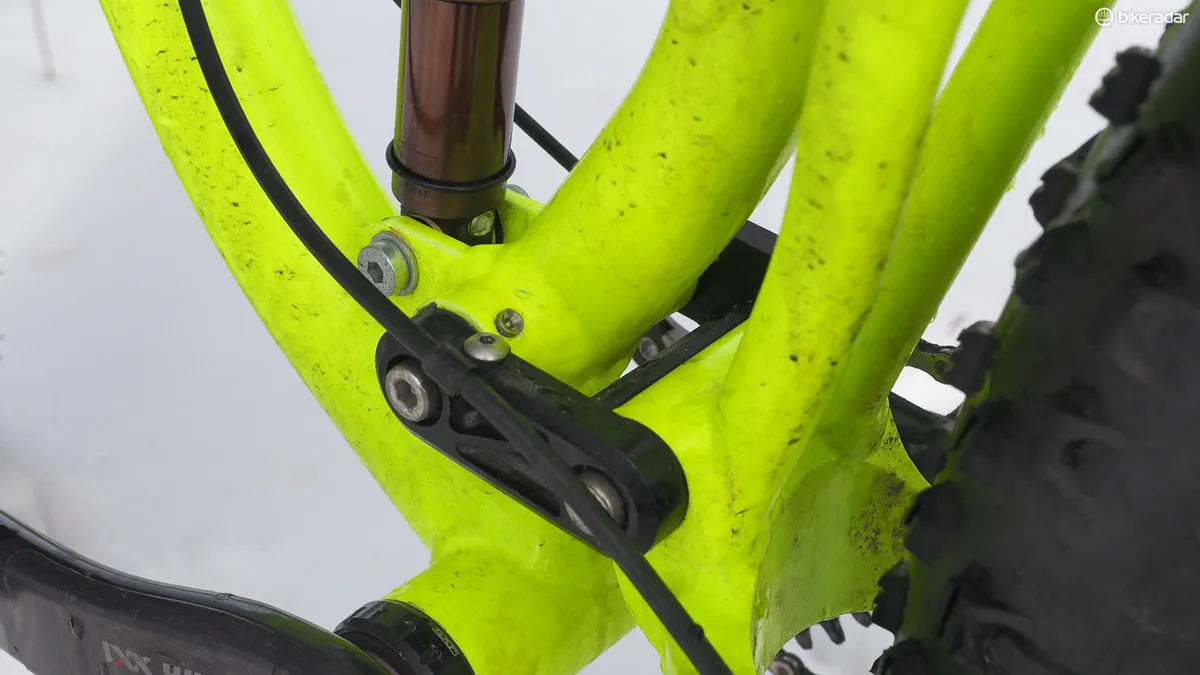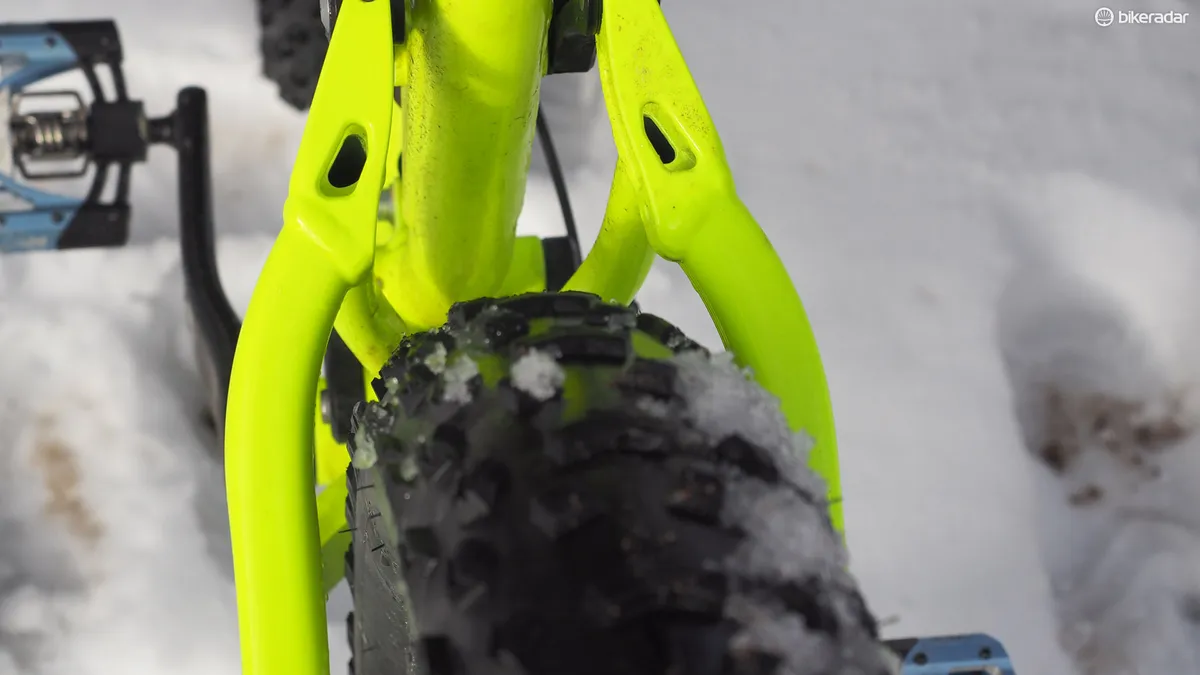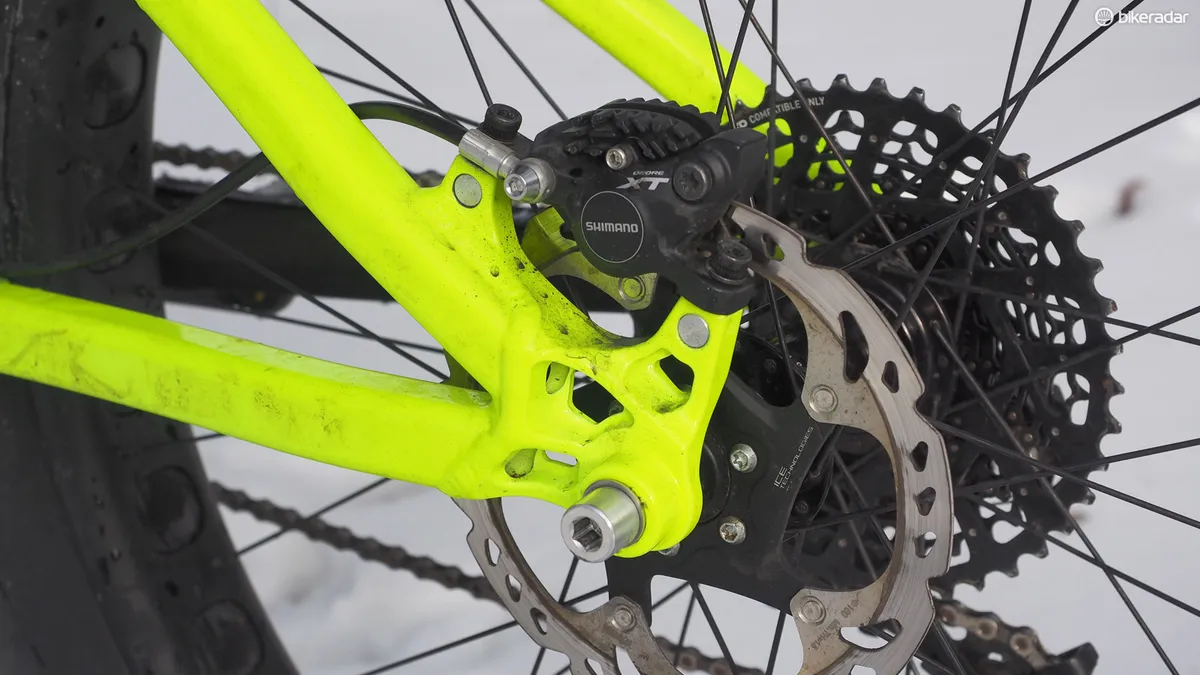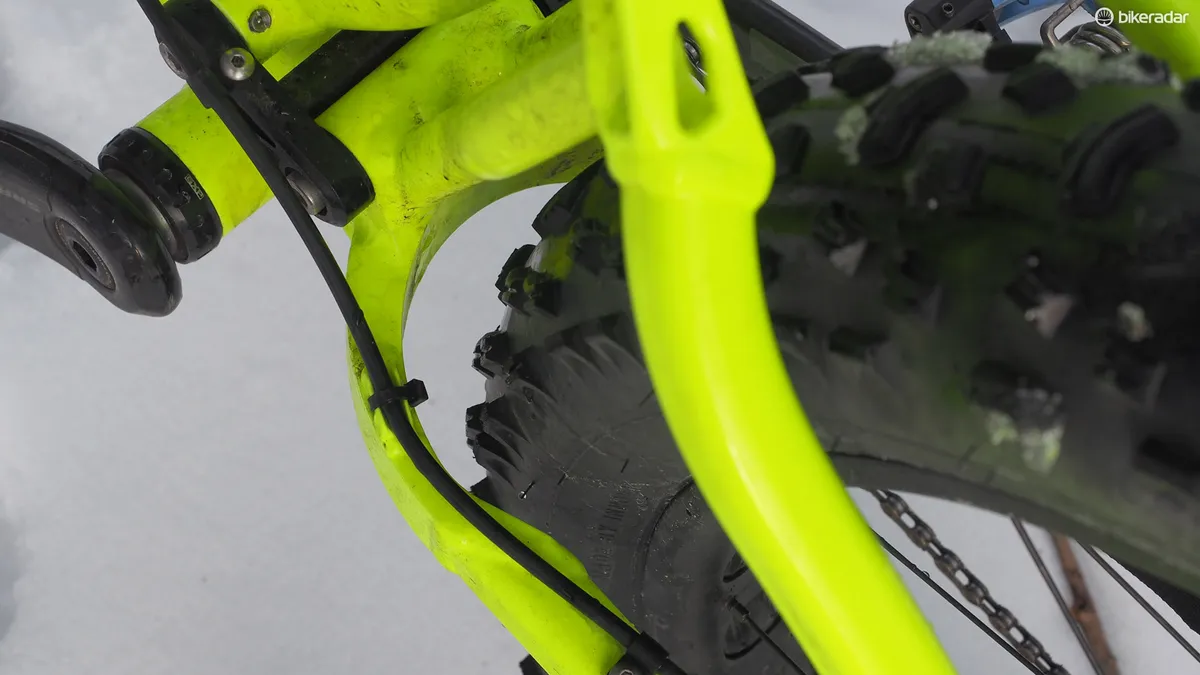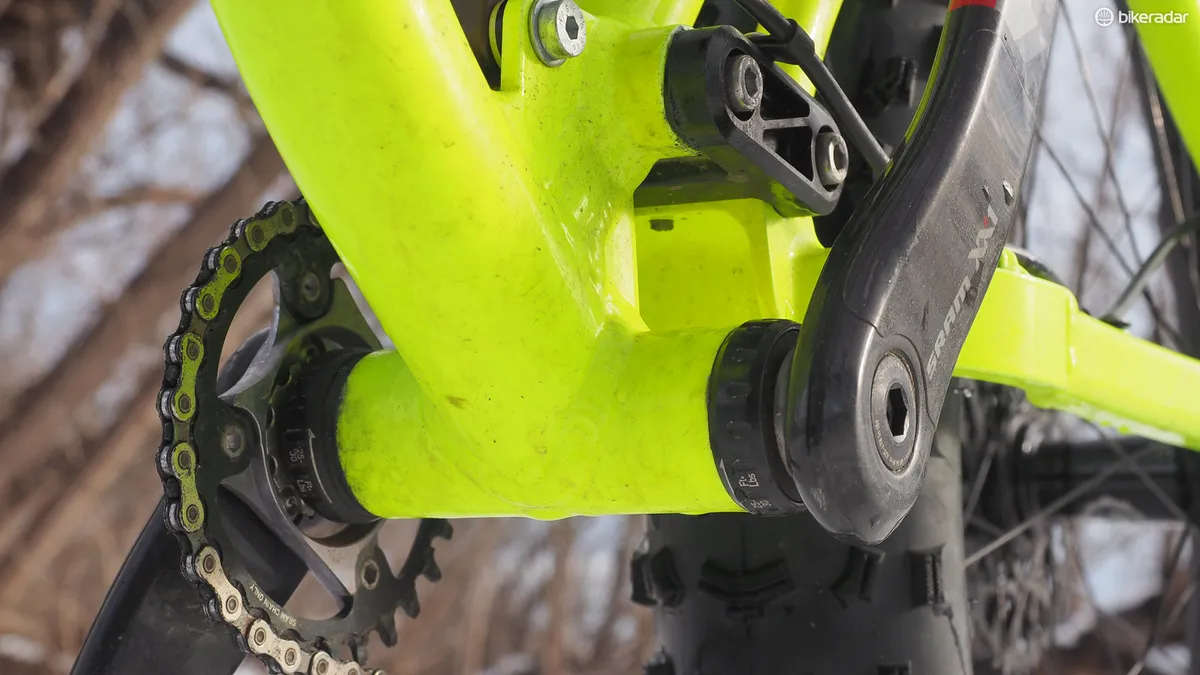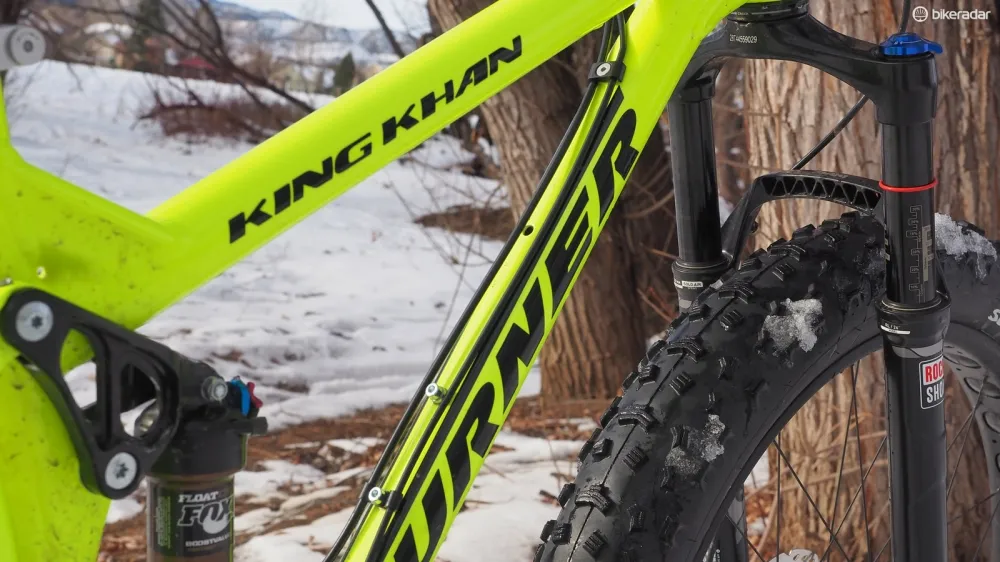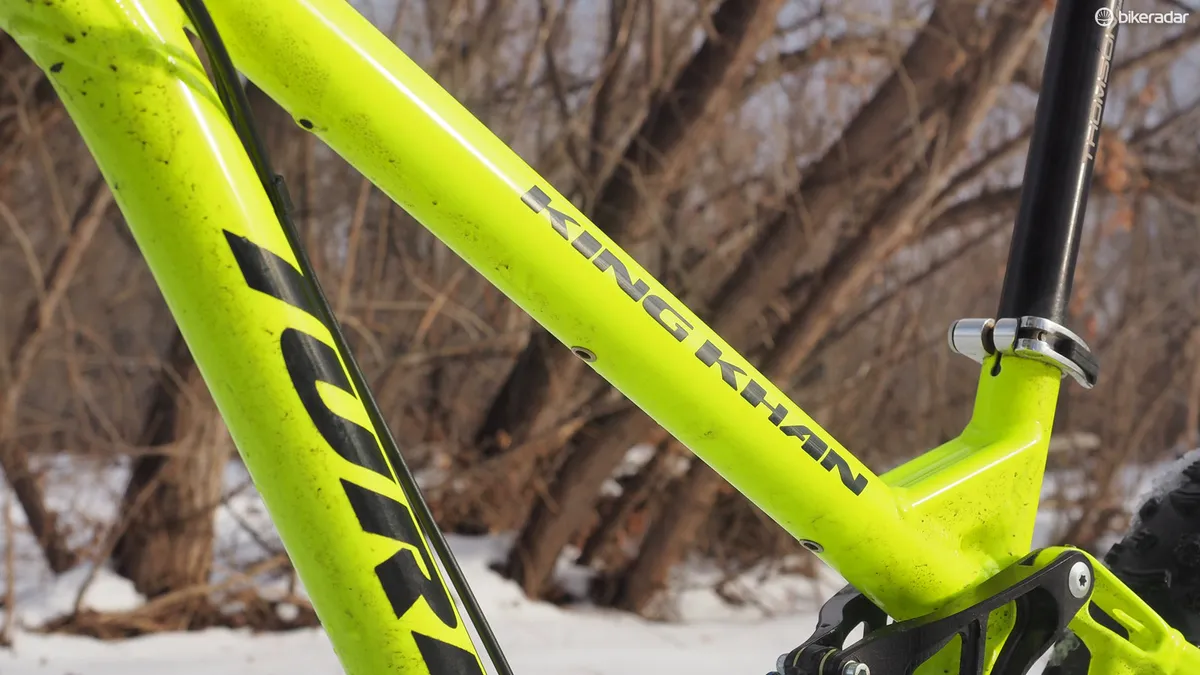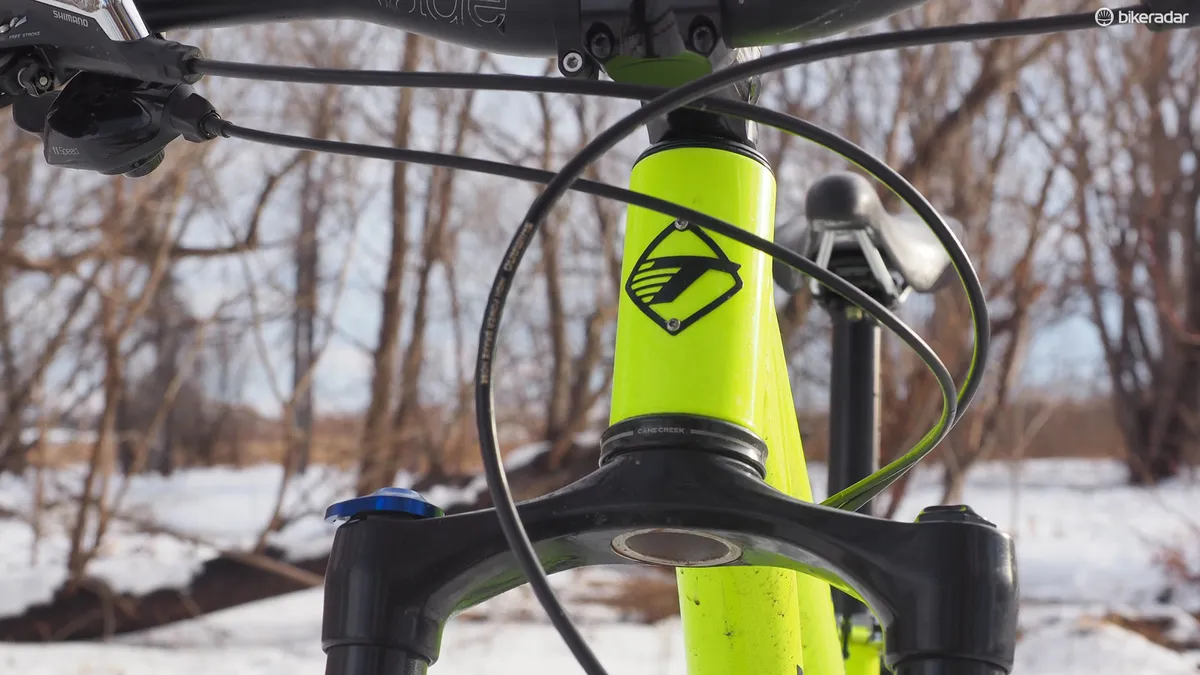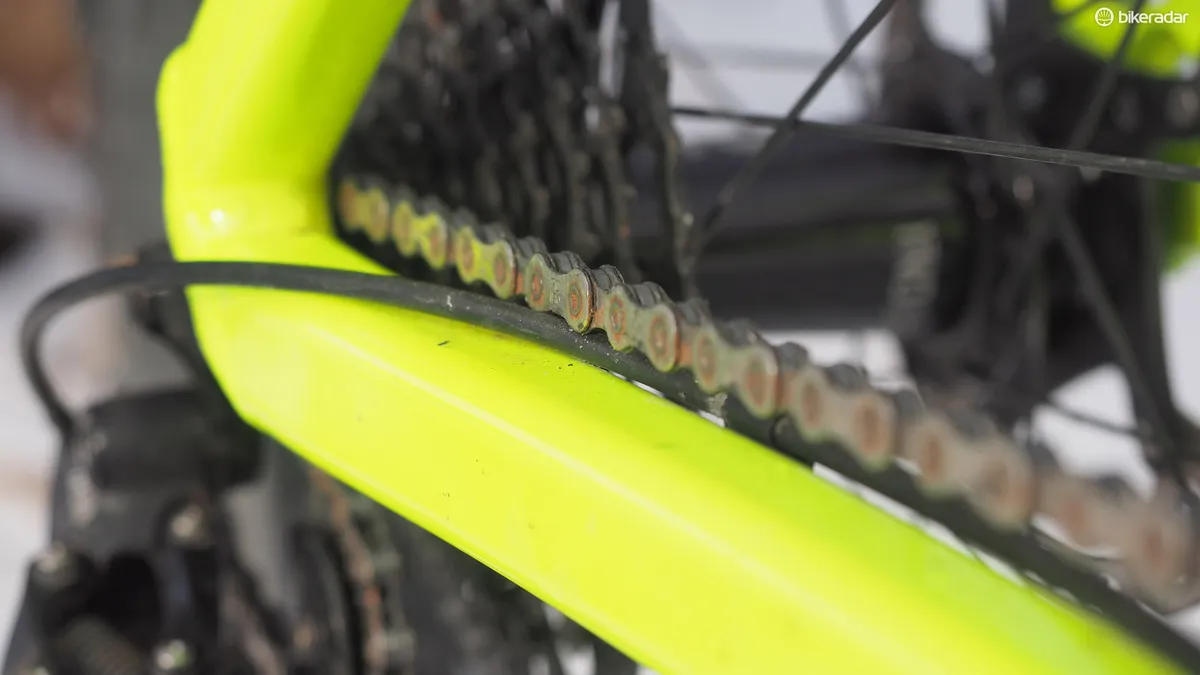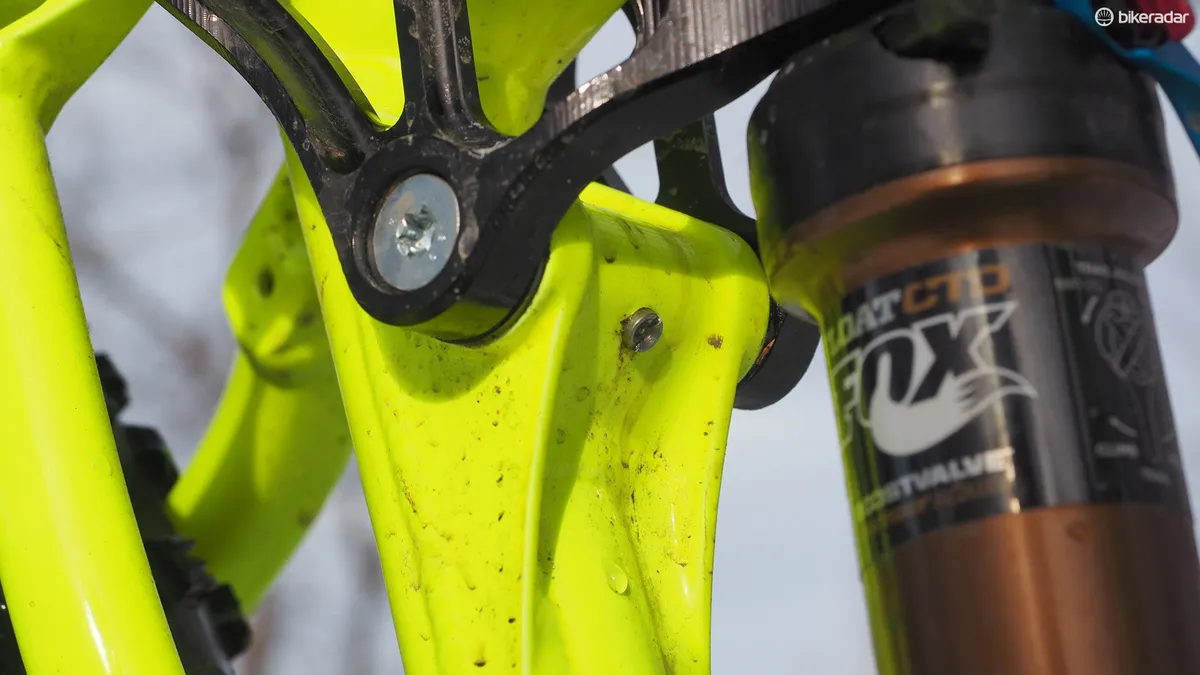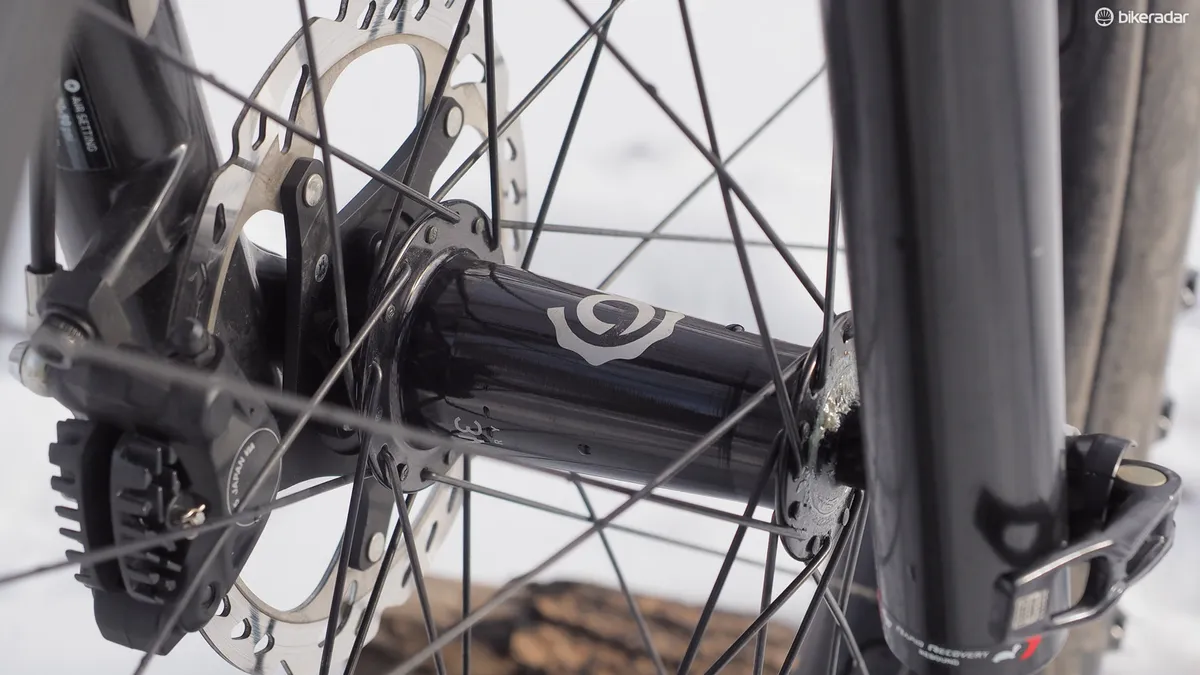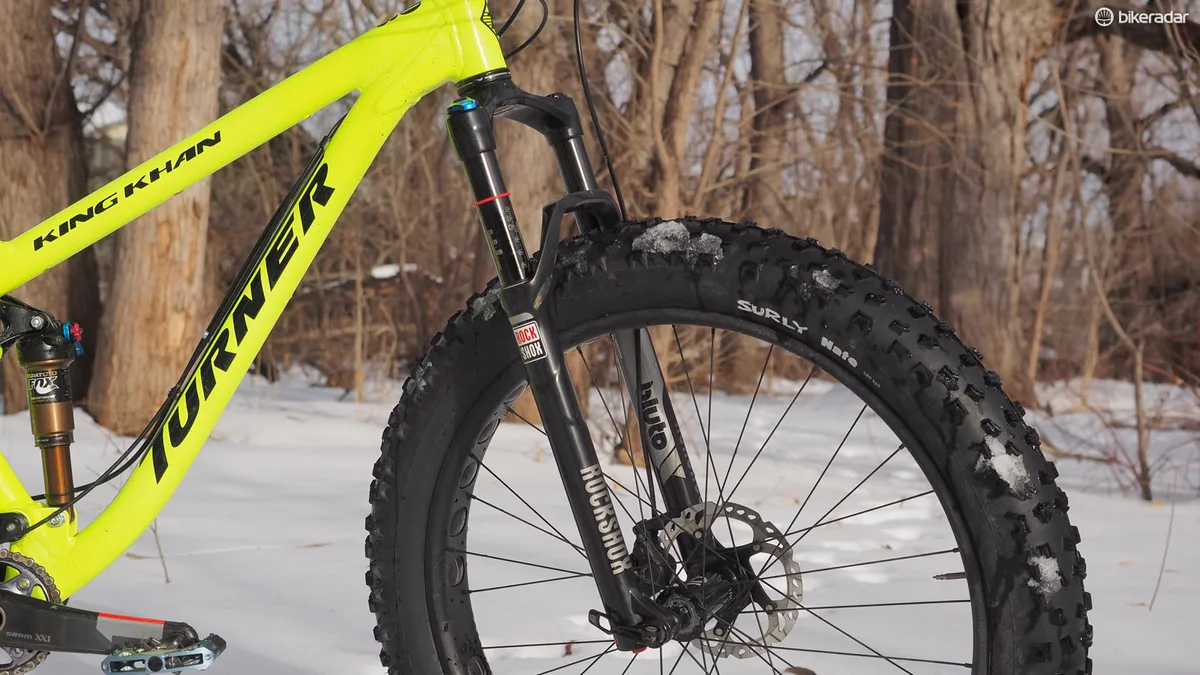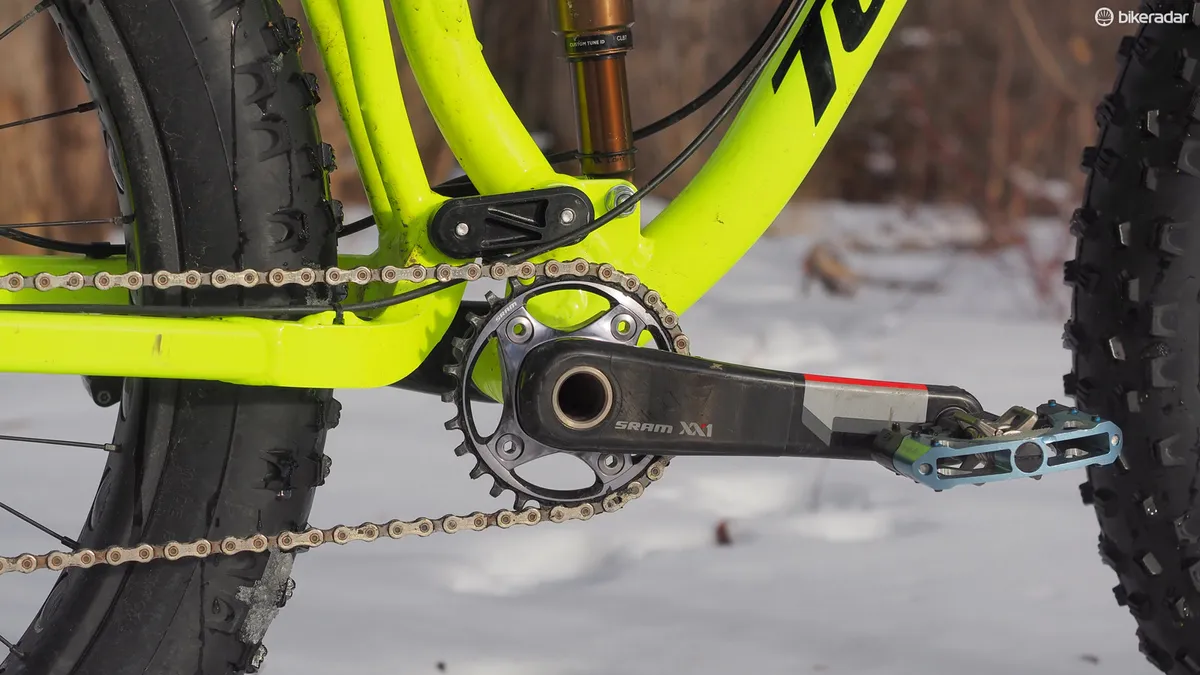Few bikes that have rolled through BikeRadar's clutches have drawn as much attention as Turner's new King Khan. Although the neon yellow paint isn't exactly subtle, what's really intriguing is the idea of a full-suspension fat bike.
- Highs: Fantastic dw-link rear suspension design, awesome stability, gobs of tire clearance, excellent handling
- Lows: Heavy frame, very expensive
- Buy if: You don't consider fat biking to be solely a winter activity
Ride and handling: slow on the climbs, practically unstoppable everywhere else
Almost without fail, the first question people ask us upon laying eyes on the King Khan is whether rear suspension is necessary on a fat bike. And the answer is… it depends.
We tested the King Khan back-to-back with several other fat bikes and the effect of having 120-125mm of balanced wheel travel front and rear is impossible to miss. Fat bikes do have lots of built-in squish on account of the giant tires but that motion is undamped and essentially impossible to tune independently of traction. Even the best hardtail fat bikes we've sampled can sometimes lose their composure on rougher sections of ground once things starting bouncing around. Given the right – or should that be wrong? – conditions, the feel can be akin to riding a basketball, not a bike.

Rear suspension may not be necessary on a fat bike but it undeniably adds to its capabilities - plus, it's heaps of fun
In contrast, the King Khan is almost unfailingly planted and composed – just keep the rear end weighted and mow through just about anything in your way, up or down. Traction on both slippery climbs and posthole-littered descents is noticeably better yet the motion isn't always obvious, especially on snow. Nevertheless, we climbed off the saddle after more than a few test rides having clearly used all of the travel.
Helping matters is Turner's characteristically fantastic frame geometry. Despite the monstrous treads, the King Khan handles remarkably similarly to a modern trail bike with excellent high-speed stability, relatively nimble reflexes in tighter quarters, and almost none of the 'auto steer' feeling that often accompanies fat bikes (save for when you're running ultra-low pressures on hard surfaces, which you likely wouldn't do, anyway).

There's ample clearance for 4.8in-wide tires on 80mm-wide rims
Turner and suspension partner Dave Weagle have apparently done a good job of tuning the dw-link rear end for use with fat bike tires, too. The suspension isn't especially supple but then again, with four inches of tire beneath you, it doesn't need to be. It's highly effective on the medium-to-large bumps that would otherwise unsettle a hardtail, though, and it's a fantastically efficient chassis to pedal.
Then again, it had better be.
The King Khan is a hoot to ride but it's also seriously heavy with a claimed frame weight of 3.3kg (7.2lb, including rear shock, seatpost collar, rear derailleur hanger, and rear thru-axle). Our complete test bike tips the scales at a substantial 15.29kg (33.70lb) – and that's without pedals or the benefit of a dropper post, which bring the sum total to an even heftier 16.19kg (35.7lb). There's some wiggle room to bring that number down (most notably by converting to a tubeless setup) but not much.
Frame: typical Turner in construction but 1x only
Aside from the overblown proportions, the King Khan is typical Turner with mildly shaped alloy tubes, clean TIG-welded joints, and lots of intricate CNC machine work such as on the beefy upper and lower suspension pivots, custom rear thru-axle dropouts, and spacious chainstay yoke – all made in the United States, as usual.
Among Turner's trademark details are the replaceable threads for the post mount rear disc brake mount, the easy-to-service (and versatile) surface-mounted housing guides, a creak-free threaded bottom bracket shell and the solid journal bearing-equipped suspension pivots. According to company principal Dave Turner, those pivots are both lighter and less prone to flex than traditional cartridge bearings, plus they're easier to service given the built-in grease fittings. Although we've sometimes noticed a slight decrease in small bump sensitivity on other Turner machines in the past, any difference here is wiped out by the tire volume.

Grease ports make suspension pivot maintenance a snap
Speaking of which, of the two thru-axle rear hub widths currently used in the fat bike world, Turner opts for the narrower 177mm spacing to provide a little more clearance for your heels and to narrow things up in general while still leaving plenty of room for 4.8in-wide tires on 80mm-wide rims. More impressively, Turner also manages to keep the chainstays admirably short at just 462mm – virtually identical to many fat bike hardtails. Turner did have to sacrifice front derailleur compatibility to do all of that, though, so the King Khan is strictly 1x-only.
Although we're generally reluctant to review non-production products, we agreed to test "one of the first four ever" King Khans that Turner had built and not surprisingly, noticed a few hiccups. There's insufficient down tube clearance for the fork crown, for example, and a bit of chain rub on the rear derailleur housing when in the smallest cog. Turner says that both of those issues were resolved on production frames, though, plus the custom machined bolt-on axle on our tester has been replaced by a more refined DT Swiss skewer.
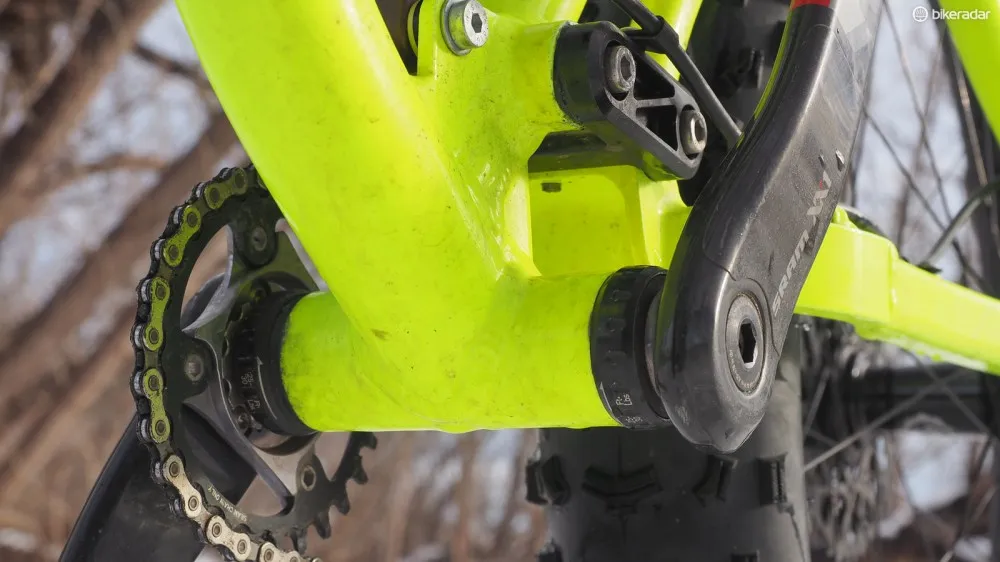
Three cheers for the threaded bottom bracket
Equipment: workhorse gear for all-season shredding
As noted above, our tester is part of Turner's demo fleet and arrived with a decidedly non-standard parts kit that shares little with production builds so we'll restrict our comments to the components that actually come on complete bikes.
The 120mm-travel RockShox Bluto RL fork is a good match for the Fox Float CTD rear shock in terms of overall feel and we didn't have any issues running it in temperatures as low as -13°C (8°F). As others have noted, though, the 32mm-diameter stanchions and spindly 15mm thru-axle make for a vague front end when there's good traction available. The Bluto is still the best option around for a fat bike suspension fork but it's only a matter of time before RockShox (or another company) comes out with something more capable.
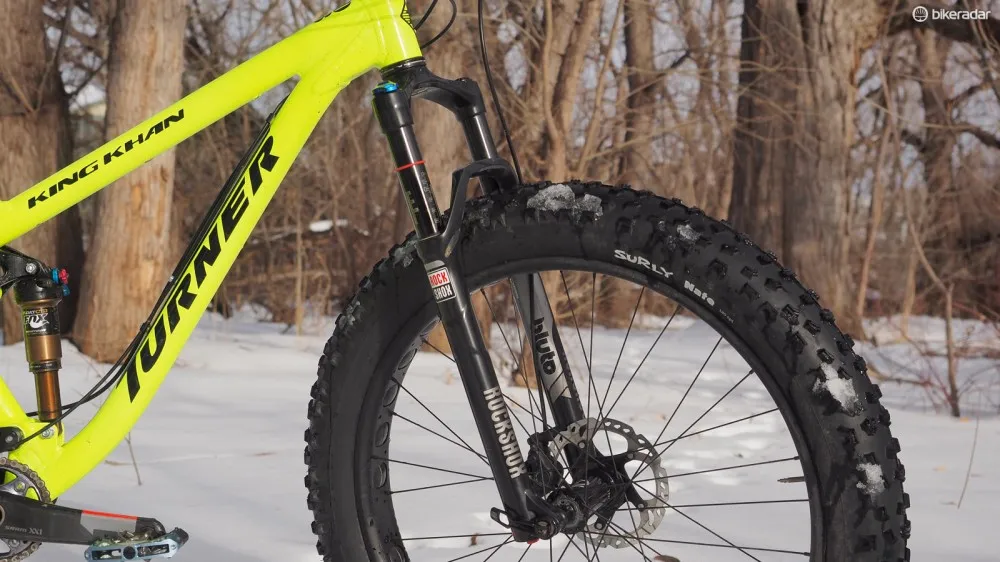
The RockShox Bluto RL is a good fork but we still can't help but wonder how much better fat bike forks will get
The restriction to 1x drivetrains is a little disappointing but in fairness, the SRAM XX/XO1/X1 setup on our test bike was flawless in everything from dry-conditions singletrack to heavy, slushy snow. Turner includes a 28-tooth chainring stock and given the bike's weight, it's a good choice.
Bottom line: a beast of a bike, for better or worse
If your definition of fat biking is solely restricted to wintertime conditions, the King Khan is probably overkill. The rear suspension is unquestionably nice to have but we're not sure it's worth the hefty weight penalty over a similarly priced carbon hardtail that could potentially save upwards of 4lb. That said, we had by far the most fun on the King Khan of any fat bikes we've ridden, and that may be all that matters.
For more information, visit www.turnerbikes.com.
